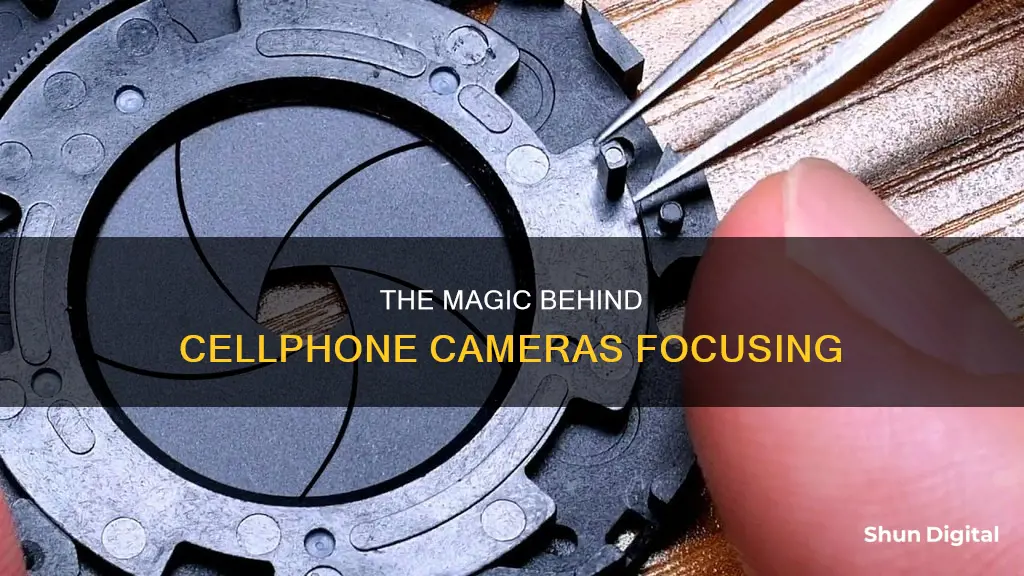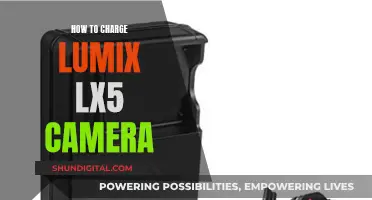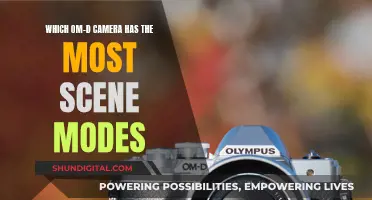
The process of focusing a cellphone camera is known as autofocus. This feature is now standard on most smartphones, with companies like Apple, Samsung, and LG investing in its development. Autofocus works by moving the lens back and forth until the position of maximum focus is found. The lens is moved closer to or farther from the sensor, which then digitizes the light and turns it into a photograph. There are three main methods for performing autofocus: contrast-detection autofocus, phase-detection autofocus, and laser autofocus.
| Characteristics | Values |
|---|---|
| Number of autofocus methods | 3 |
| Example autofocus methods | Contrast-detection, Phase-detection, Laser |
| Autofocus method used by most smartphones | Contrast-detection |
| Autofocus method used by some newer high-end smartphones | Phase-detection |
| Phase-detection autofocus smartphones | Galaxy S5, Galaxy S6, iPhone 6, iPhone 6 Plus |
| Laser autofocus smartphones | LG G3, LG G4 |
| Average time taken for contrast-detection autofocus | 1 second |
| Average time taken for phase-detection autofocus | 0.3 seconds |
| Average time taken for laser autofocus | 0.276 seconds |
| Active autofocus systems | Sonar, Infrared laser |
| Passive autofocus systems | Contrast-detection, Phase-detection |
| Passive autofocus system used by most smartphones | Contrast-detection |
What You'll Learn

Autofocus
Contrast-Detection Autofocus
The oldest and most popular method of autofocus found in smartphone cameras is Contrast-Detection Autofocus (CDAF). This method relies on using the contrast between light and dark areas in a scene to bring the picture into focus. The camera moves the lens back and forth until it finds the point of maximum contrast, which is when the image is in focus. However, this method is slow and doesn't work well in low-light conditions or with moving objects.
Phase-Detection Autofocus
A faster alternative to CDAF is Phase-Detection Autofocus (PDAF), which is more commonly seen in DSLRs. This method analyses the light as it passes through the lens and compares light from two apertures on opposite sides of the lens. If the image is in focus, the two light rays will have an overlapping intensity profile. If not, the system can determine how much the focus needs to be adjusted. PDAF is much faster than CDAF and can be used for continuous autofocus, making it ideal for moving objects. However, it still performs poorly in low-light conditions.
Laser Autofocus
Laser Autofocus, also known as Active Autofocus, is an approach taken by LG. Unlike passive autofocus methods, Active Autofocus doesn't rely on incoming light. Instead, the phone emits an infrared laser beam towards the object and calculates the distance by measuring the time it takes for the light to reflect back to the sensor. This method is super-fast and works well in low-light conditions. However, it is expensive, requires additional hardware, and can only be effective up to a certain distance.
Hybrid Autofocus
Hybrid Autofocus combines two or more autofocus technologies to overcome the limitations of specific methods. For example, Sony combines PDAF and CDAF, while Google previously used both PDAF and Laser Autofocus. This pairing results in faster and more accurate autofocus performance.
Moultrie Cameras: Where Are They Manufactured and Why?
You may want to see also

Phase-detection autofocus
PDAF works by detecting the phase of light rays entering a camera. When a photograph is in focus, light rays cast a light on opposite sides of the lens, and this is known as being 'in phase'. When the lens is not focused correctly, the opposite side is no longer illuminated (known as 'not being in phase'). The camera can then detect that the focus has not been achieved.
In DSLR cameras, there is a secondary mirror behind the reflex mirror that reflects a portion of light into a phase-detect sensor. The phase-detect sensor instructs the lens to make adjustments if the images it receives do not look identical. In contrast, the image is captured by a different device – the sensor on the back of the camera. This means that for PDAF to work correctly, the distance between the lens mount and the camera sensor, as well as the distance between the lens mount and the phase-detect sensor, must be identical.
Smartphones do not have the same space to fit all the parts of a DSLR. Instead, mobile sensors have dedicated PDAF pixels built into the image sensor, an approach borrowed from compact cameras. These photodiodes are physically masked so that light from only one side of the lens reaches them, producing left-looking and right-looking pixels on a single image sensor. The phase difference between the two images is then calculated to determine the focus point.
PDAF is particularly useful for action photography as it is incredibly fast and allows the sensor to assess the image's depth of field. However, it may struggle to focus on low-contrast subjects or in low-light conditions.
Salvaging Your Camera After a Battery Leak
You may want to see also

Contrast-detection autofocus
In a hybrid autofocus system, contrast-detection autofocus is combined with phase-detection autofocus to compensate for the weaknesses of the latter, and to increase the overall reliability, accuracy, and speed of autofocus.
Disputing Camera Red-Light Tickets in NY: Know Your Rights
You may want to see also

Laser autofocus
Distance travelled by laser beam = Speed of Light * Time to receive reflection
Distance to object = Distance travelled by laser beam / 2
This system is similar to RADAR and is much faster than passive autofocus systems like contrast-detection and phase-detection autofocus. According to LG, the laser autofocus system in the LG G3 and LG G4 can focus an image in just 0.276 seconds.
One advantage of laser autofocus is that it works in low-light conditions since it emits its own beam of light. It is also super-fast, taking only around 0.276 seconds to focus an image, which is faster than both contrast-detection and phase-detection autofocus.
However, laser autofocus has some limitations. It is only effective up to a certain distance, with a range of about 5 meters. Beyond this range, the phone will fall back to contrast-detection autofocus. Additionally, it can be confused by reflections, such as when taking photos through a window, which can result in incorrect distance measurements and the image being focused on the wrong object. Laser autofocus is also expensive and requires additional hardware, which is why it is currently only available on high-end smartphones.
Linhof Cameras: Still in Production or a Thing of Past?
You may want to see also

Active autofocus
One of the benefits of Active AF is that it can be used in low-light environments where passive autofocus systems may struggle. However, it is important to note that Active AF is only suitable for stationary subjects and objects within a close range. If the object is too far away, the light beam may not be reflected back to the camera. Additionally, Active AF can be confused by reflections, such as when taking photos through a window.
Active AF is typically found in high-end smartphones, such as those from LG, and in certain speedlight flashes from Nikon or Canon that have an "AF Assist" function.
Mastering the Art of Holding a Camera with a Battery Grip
You may want to see also
Frequently asked questions
Autofocus is a feature that automatically adjusts the camera's focus to ensure that the image is sharp and clear. It does this by moving the lens back and forth until the position of maximum focus is found. This is important because it allows you to capture the full amount of detail in your photos.
There are three main methods for autofocus in smartphones: contrast-detection autofocus, phase-detection autofocus, and laser autofocus. Contrast-detection autofocus is the most common method, where the lens is moved back and forth until the point of maximum contrast is found. Phase-detection autofocus is a newer method that analyses the light passing through the lens and is faster and more accurate. Laser autofocus emits a beam of infrared light to calculate the distance to the object and adjust the focus accordingly.
Contrast-detection autofocus is slow and doesn't work well in low-light conditions or with moving objects. Phase-detection autofocus is faster and more accurate, but is only available on high-end smartphones. Laser autofocus is super-fast and works in low-light conditions, but it is expensive and only effective up to a certain distance.
The technology for autofocus has been continuously improving, with companies like Apple, Samsung, and LG innovating in this area. The latest smartphones have faster and more accurate autofocus systems, reducing shutter lag and improving image quality.







